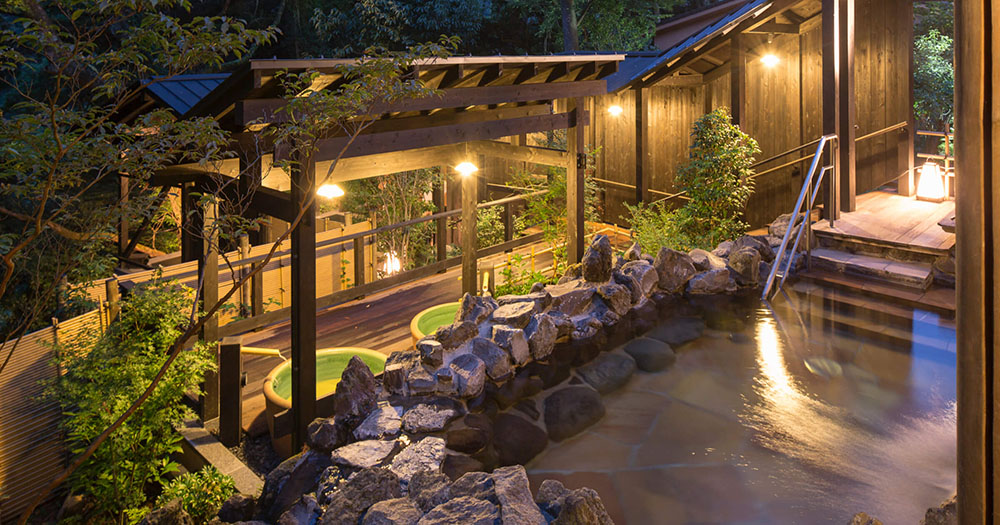Hakone has been one of Japan’s most beloved hot spring resorts for centuries. With over a dozen natural springs supplying high-quality water to numerous bathhouses and ryokans, Hakone offers an unparalleled onsen experience for both enthusiasts and first-timers alike.
Key Information
- Location: Hakone, Kanagawa Prefecture, Japan
- Best time to visit: Year-round, particularly stunning in autumn
- Main features: Diverse hot spring facilities, beautiful natural scenery
- Recommended stay: 2-3 days
History of Hakone Hot Springs
The history of Hakone’s hot springs dates back to 738 AD. Legend has it that the Buddhist monk Kokai Hijiri discovered the first hot spring in Hakone. Since then, it has been a retreat for Japanese nobility and the warrior class. During the Edo period (1603-1868), Hakone’s popularity grew with the development of the Tokaido road connecting Edo (Tokyo) and Kyoto.
In the Meiji era (1868-1912), Hakone became a hotspot for foreign visitors. Many Western-style hotels and villas were built, giving Hakone an international flair. Today, Hakone maintains its status as one of Japan’s top onsen destinations, attracting millions of visitors annually.
Major Hot Spring Areas
Yumoto Onsen
Yumoto Onsen is Hakone’s largest and oldest hot spring town. Known for its high-quality water, it boasts numerous bathhouses and inns. Visitors can enjoy hot spring baths in public bathhouses or ryokans. Many ryokans open their baths to day visitors as well as overnight guests. While staying guests can use the baths for free, day visitors typically pay an admission fee between 500 and 2000 yen.
A highlight of Yumoto Onsen is its variety of bath types. From outdoor rotenburo to large indoor baths, private family baths to therapeutic medicinal baths, visitors can choose experiences that suit their preferences. The town also retains many Edo-period buildings, allowing visitors to stroll through a landscape that seems frozen in time.
Gora Onsen
Located midway up Mount Hakone, Gora Onsen is a relatively newer hot spring area. Its waters are rich in sulfur, known for their therapeutic effects on skin conditions and arthritis. The most striking feature of Gora Onsen is its spectacular views. Many outdoor baths offer panoramic vistas of Mount Fuji (on clear days) while you soak.
Gora Park is a major attraction in the area, featuring various flowers throughout the seasons, with azaleas in spring and autumn foliage being particularly famous. Gora is also the starting point of the Hakone Tozan Cable Car, providing easy access to other Hakone attractions.
Sengokuhara Onsen
Situated on Hakone’s highlands, Sengokuhara Onsen is surrounded by beautiful natural scenery. Its clear waters are rich in minerals and are often referred to as “beauty baths.” The area is famous for its extensive susuki grass fields, which turn a stunning golden color in autumn, attracting many visitors.
Besides hot springs, Sengokuhara offers several noteworthy attractions. The Hakone Open-Air Museum showcases works by internationally renowned artists, while the Hakone Geomuseum provides insight into the area’s geological history. For outdoor enthusiasts, there are numerous hiking trails in the vicinity.
Best Time to Visit
Hakone is an ideal destination year-round, with each season offering its unique charm:
- Spring (March-May): Cherry blossoms in bloom, pleasant weather
- Summer (June-August): Cool retreat from city heat, lush green landscapes
- Autumn (September-November): Spectacular fall foliage, most picturesque season
- Winter (December-February): Possible snow scenes, especially cozy for hot spring bathing
Transportation Guide
- From Tokyo:
- Take the Odakyu Line Limited Express Romance Car, about 85 minutes to Hakone-Yumoto Station
- Or take the Shinkansen to Odawara Station, then transfer to the Hakone Tozan Line to Hakone-Yumoto, total time about 60-70 minutes
- Within Hakone:
- Hakone Free Pass: Covers multiple modes of transportation including mountain trains, cable cars, ropeways, and sightseeing cruise ships
- Buses: Connect major areas within Hakone
- Taxis: Convenient but expensive
Opening Hours and Admission Fees
Most public bathhouses operate from 9:00 or 10:00 AM until 10:00 or 11:00 PM. Specific times and admission fees vary by facility, generally ranging from 1000 to 2500 yen. Some high-end facilities may charge more.
Visitor Tips and Advice
- Book accommodations in advance, especially during peak seasons
- Familiarize yourself with Japanese onsen etiquette, such as washing thoroughly before entering the baths
- Bring a small towel; many facilities don’t provide them or charge extra
- Be aware of tattoo policies; some facilities may not allow guests with tattoos
- Choose appropriate onsen types; consult a doctor if you have specific health concerns
Official Website
Conclusion
With its diverse hot spring facilities, stunning natural landscapes, and rich cultural heritage, Hakone Hot Springs stands as a premier onsen destination in Japan and worldwide. Whether you seek relaxation, scenic beauty, or a taste of traditional Japanese culture, Hakone has something to offer. Immerse yourself in the rejuvenating waters of Hakone and let your body and mind be nourished by this unique Japanese onsen experience. Don’t miss out on this exceptional retreat – plan your Hakone journey today!
